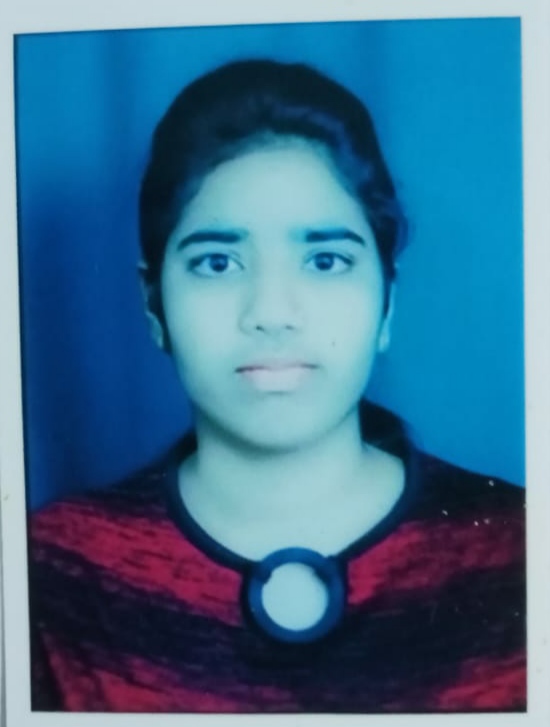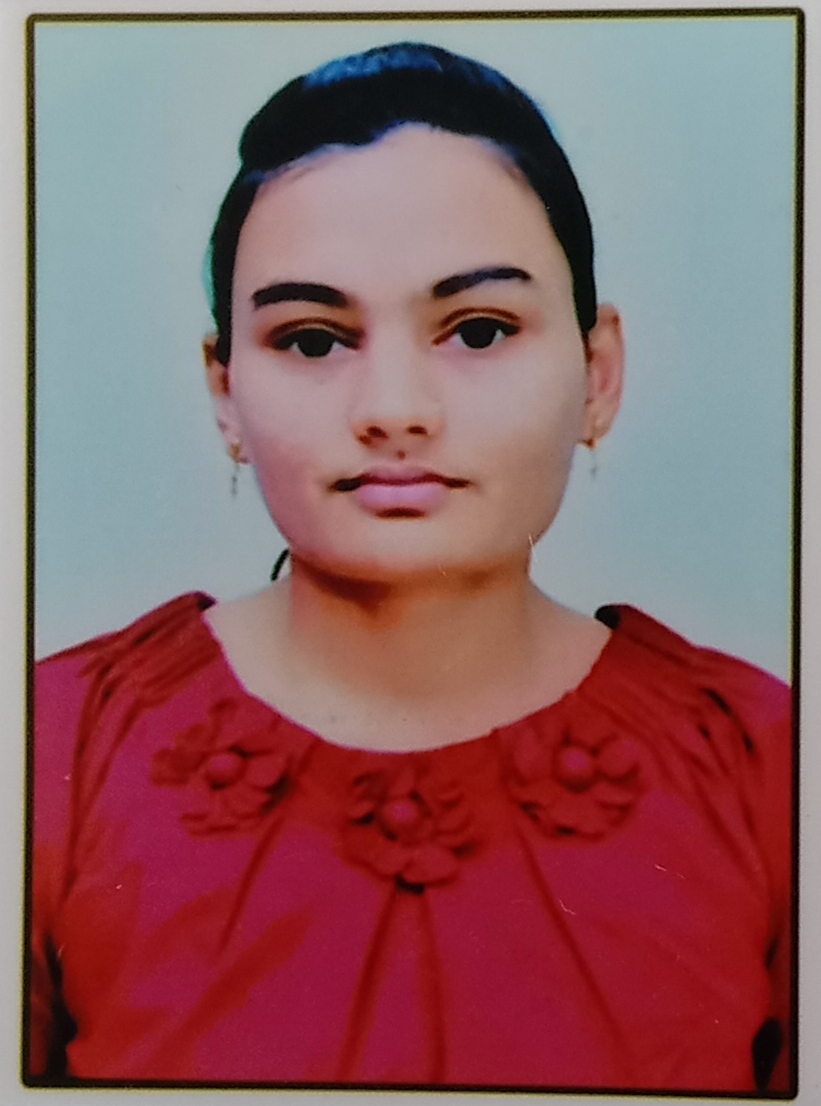Abstract
Background:
Transdermal drug delivery system (TDDS) was designed for the sustain release of content and for improving bioavilability of drug which improves patient compliance. There are various types of transdermal patches in which matrix dispersion type systems disperse the drug in the solvent along with the polymers and solvent is allowed to evaporate forming a homogeneous drug?polymer matrix. To design and formulate TDDS of topiramate (TPM) and to evaluate their extended release in vitro and ex vivo was the main objective of present study.
Materials and Methods:
The Trandermal patches of topiramate (TPM) prepared by solvent casting method using a combination of ethylcellulose, polyvinylpyrolidone (PVP), eudragit L 100, calcium monophosphide (CAP), carbopol in various ratios using polyethylene glycol (PG) as a plasticizers and oleic acid, Tween 80 as a permeation enhancers were studied.
Results:
The physicochemical compatibility of the drug and the polymers was studied by Fourier transform infrared spectroscopy. The results obtained showed no physical?chemical incompatibility between the drug and the polymers. The patches were further subjected to various physical evaluations along with the exvivo permeation studies using pig ear skin.
Conclusions:
On the basis of results obtained from the physical evaluation and ex vivo studies the patches containing the polymers, that is, Eudragit L 100 and polyvinylpyrrolidone, with oleic acid as the penetration enhancer were considered as the best formulations for the transdermal delivery of TPM.
Keywords
Eudragit L 100, matrix dispersion system, oleic acid, penetration enhancers, permeation studies, polyvinylpyrrolidone
Introduction
The trandermal drug delivery system (TDDS) is widely used drug delivery system, and transdermal patches are made to treat various diseases.[1] TDDS are extended released dosage form which offer a consistent drug concentration systematically and also avoid first pass metabolism.[2] They can even avoid drug and low absorption problem associated with gastrointestinal tract.[3] The Transderm-Scop was first transdermal drug delivery system (TDDS) developed in 1980. Which containing scopolamine drug to treat motion sickness.[4] The trandermal device is a Membrane-Moderated system. In this system the membrsne is microporous polypropylene film.[5] The drug reservoir is a solution of the drug in a mixture of polyisobutylene and mineral oil.[6] Topiramate (TPM) is a sulfa-derivative monosaccharide which has several mechanisms of action, such as blockage of voltage-gated sodium channel, hyperpolarization of potassium currents, enhancement of postsynaptic gamma-aminobutyric acid receptor activity, suppression of the ?-amino-3-hydroxy-5-methyl-4-isoxazolepropionic acid (AMPA) / kainite receptor.[7] Originally, the recognition of topiramate (TPM) emerged from its anticonvulsant residences. In 1996, it was approved by the Food and Drug Administration (FDA) for the treatment of epilepsy and was erect expected pursuasive when used as a monotherapy for tonic-clonic and incomplete seizures accompanying or outside inference. Also, as an secondary drug, it was productive in controlling seizures guide Lennox-Gastaut disease.[8]
ADVANTAGES :
- The drugs by passes pre-systemic and hepatic metabolism, therefore increases bioavailability.
- Reduced dose frequency and thus improves patient compliance.
- Eliminate the risks and inconveniences of IV therapy.
- Easy termination of drug therapy, by removal of patches.
- By avoiding the peaks and troughs in systemic drug levels associated with conventional delivery,it enhanced the therapeutic efficiency.
- Self application is possible.
- Avoid GIT absorption problem for drug .
- Maintains therapeutic level for 1 to 7 days.
DISADVANTAGES :
- This medication requires a high blood level , which makes it impossible to deliver and may even irritate or sensitize the skin.
- The adhesives could be irritating to wear and might not stick to all types of skin .
- Another significant obstacle to the products widespread acceptance is its high cost .
- Daily dose of more than 10 mg is not possible
- May not be economical .
PHYSIOLOGY OF THE SKIN :
The skin on an average adult has a surface area of around 2 m2 and receives approximately 1/3 of the blood that circulates throughout the body.[9] The epidermis, the topmost layer of skin, is made up of highly cornified (dead) cells embedded in a continuous matrix of lipid membranous sheets.[10] It comprises four morphologically distinct regions: the basal layer, spiny layer, stratum granulosum, and highest stratum corneum (Figure 1).[11] Ceramides, cholesterol, and free fatty acids make up the distinct composition of these extracellular membranes. Every square centimeter of human skin is known to contain between 200 and 250 sweat ducts and 10 to 70 hair follicles on average. Skin is the most readily accessible organ of the human body.[12] When drug are applied on the skin surface, there are several routes through which drug can penetration into and through the skin. Drug can enter the body through the appendages (tranappendageal) or the stratum corneum (transepidermal). There are two distinct pathways for penetration into the stratum corneum: (i) a transcellular pathway that alternates between penetration via the lipid lamellae and corneocytes, and (ii) an intercellular pathway that follows the tortuous pathway along the lipid lamellae.[13]

Figure.1 : Physiology of the skin
BASIC COMPONENTS OF TRANSDERMAL DRUG DELIVERY SYSTEM :
The Transdermal device has following components :
Drug
Polymer matrix
Permeation enhancers
Other excipients
MATERIALS AND METHODS :
The transdermal patches of TPM (topiramate) prepared by solvent casting method using a combination of ethylcellulose , PVP(polyvinylpyrrolidone ) , eudragit L 100 , CAP (calcium monophosphide) , carbopol in various ratios using PG (polyethylene glycol) as a plasticizers and oleic acid , Tween 80 as a permeation enhancer.[14] In order to create a smooth , uniform , and transparent backing membrane , weighed amounts of polyvinyl alcohol ( 25 % w/v ) were added to the necessary volume of warm distill water. The mixture was than continuously stirred and heated intermittently at 60 o C for a few seconds. The mixture was than poured into glass molds that has previously had the open ends covered with aluminium foil. The molds were than dried at 60 o C for six hours.[15]
PREFORMULATION STUDIES :
Preformulation experiments were conducted to determine the physicochemical properties of a drug (TPM) and its compatibility with various excipients prior to forming the drug component into a transdermal patch (dosage form). The drugs compatibility with various excipients was investigated using FTIR spectroscopy (shimadzu 1800).[16]
CONDITIONS IN WHICH TRANSDERMAL PATCHES ARE USED :
- When the patient is asking an alternate drug delivery stratergy because to unpleasant side effects ( such as constipation) and their inability to swallow oral medication (dysphagia).
- Where effective administration could potentially improve pain control. Patients with cognitive impairement or those unable to self-medicate with their analgesia for various reasons may find this helpful.
- Transdermal drugs are medications used in managing and treating various conditions , including hypertension , motion sickness and migraines.[17][18][19]
CONDITIONS IN WHICH TRANSDERMAL ARE NOT USED :
- Acute pain must be treated , chronic pain cannot be treated.
- Where quick dose titration is necessary.
- If the dose needs are 30 mg or less every 24 hours.[20][21][22]
PRELIMINARY SCREENING :
Evaluation of transdermal patches
To evaluate the impact of different polymer combinations, a preliminary screening was conducted on all the prepared formulations.[23]
Folding endurance
A precisely measured (2 cm × 2 cm) strip was cut, then folded repeatedly at the same location until it broke. The value of the folding endurance was determined by counting the number of times the film was folded at the same location without breaking.[24]
Tensile strength
The patch's tensile strength was assessed by the utilization of a tensiometer. There are two load cell grips in it. The upper one was adjustable while the lower one was fixed. 2 cm × 2 cm film strips were positioned in between these cell grips, and force was applied progressively until the film snapped. The dial reading in kg was used to determine the tensile strength directly.[25]
Percentage elongation break test
The length shortly before the break point was noted in order to calculate the percentage elongation break, which was then calculated using the formula below.[26]
Elongation percentage = [(L1-L2)/L2] × 100
Where, L1: Final length of each strip
L2: The initial length of each strip
Thickness
The thickness of transdermal film was measured using micrometer screw gauge from three different points. The average and the standard deviation (SD) of the three readings were recorded.[27]
Drug content
A specified area of patch (2 cm × 2 cm) was dissolved in 100 mL methanol and shaken continuosly for 24 Hr. Then the whole solution was ultrasonicated for 15 min. After filtration, the drug was estimated spectrophotometrically at wavelength of 281 nm and determined the drug content.[28]
Percentage moisture content
The prepared film were weighed individually and kept in a desiccators containing fused calcium chloride at room temperature for 24 Hr. After 24Hr , the films were reweighed and determined the percentage moisture content from the below mentioned formula.[29]
%W = [A-B/B] × 100
Where, %W = Percentage of moisture in the sample,
A = Weight of wet sample (grams), and
B = Weight of dry sample (grams)
RESULT :
Transdermal patches of TPM were prepared by matrix type solvent casting method to achieve a controlled release, improved bioavailability of the therapeutic drug and to reduce the toxicity. This is the first report on transdermal drug delivery of TPM and found to be effective compared to previously reported dosage forms of TPM.
CONCLUSION :
The Transdermal patches of topiramate (TPM) prepared by solvent casting method using a combination of ethylcellulose, PVP, eudragit L 100, CAP, carbopol in different ratios using PG as plasticizers and oleic acid, Tween 80 as a permeation enhancers were studied. Good physicochemical properties such as thickness, weight variations, drug content, and folding endurance showed by all formulation. The in vitro release data showed that the type and concentration of the polymer affect the drug release from the patch. From this data, optimized formulations were screened. Effect of penetration enhancers such as oleic acid and Tween 80 have been checked for optimized formulation using ex vivo permeation studies. This studies indicated that when compared with formulation without permeation enhancers the drug diffused from formulations with permeation enhancers was increased. Moreover, the formulations F30 (HPMC: PVP ; 2 : 0.75), F31 (HPMC : Eudragit ; 2:1 ) with oleic acid as permeation enhancer shows optimum permeation. The above formulations gave a maximum drug permeation of 88%, 85%, respectively over 12 Hr. This two formulations were considered as a best formulation among the prepared patches. The results of this study showed that delivering TPM topically in the form of a transdermal patch can solve the issues with the oral formulation for pediatric patients with epilepsy.
REFERENCES:
- Cherukuri, S., Batchu, U.R., Mandava, K., Cherukuri, V. and Ganapuram, K.R., 2017. Formulation and evaluation of transdermal drug delivery of topiramate. International journal of pharmaceutical investigation, 7(1), p.10.
- K. C. Garala, A. J. Shinde, and P. H. Shah, “Formulation and in-vitro characterization of monolithic matrix transdermal systems using HPMC/Eudragit S 100 polymer blends,” International Journal of Pharmacy and Pharmaceutical Sciences, vol. 1, no. 1, pp. 108–120, 2009.
- K. Ghosal, R. Rajan, and A. Nanda, “Effects of chemical enhancers on the release of glipizide through matrix patch,” International Journal of ChemTech Research, vol. 1, no. 4, pp.1128–1130, 2009.
- Panner Selvam R, Anoop Kumar Singh, Sivakumar T, Transdermal drug delivery systems for antihypertensive drugs - A review, IJPBR, 2010, 1(1), 1-8.
- Kakkar A, P and Ajay Gupta, Gelatin Based Transdermal Therapeutic System, Indian Drugs, 1991, 29 (7), 308-315.
- Chowdary K.P.R and Naidu R.A.S, Transdermal Drug Delivery, A Review of Current Status, Indian Drugs, 1995, 32(9), 414-422.
- Ramadan NM, Buchanan TM. New and future migraine therapy. Pharmacol Ther. 2006;112(1):199–212.
- Zou LP, Lin Q, Qin J, Cai FC, Liu ZS, Mix E. Evaluation of open-label topiramate as primary or adjunctive therapy in infantile spasms. Clin Neuropharmacol. 2008;31(2):86–92.
- Mula M, Cavanna AE, Monaco F. Psychopharmacology of topiramate: from epilepsy to bipolar disorder. Neuropsychiatr Dis Treat. 2006;2(4):475–488. 11. Berlin HA. Antiepileptic drugs for the treatment of post-traumatic stress disorder. Curr Psychiatry Rep. 2007;9(4):291–300.
- Supuran CT, Di Fiore A, De Simone G. Carbonic anhydrase inhibitors as emerging drugs for the treatment of obesity. Expert Opin Emerg Drugs. 2008;13(2):383–392.
- Johnson BA, Ait-Daoud N. Topiramate in the new generation of drugs: efficacy in the treatment of alcoholic patients. Curr Pharm Des. 2010;16(19):2103–2112.
- McElroy SL, Guerdjikova AI, Martens B, Keck PE Jr, Pope HG, Hudson JI. Role of antiepileptic drugs in the management of eating disorders. CNS Drugs. 2009;23(2):139–156.
- Hollander E, Dell’Osso B. Topiramate plus paroxetine in treatmentresistant obsessive-compulsive disorder. Int Clin Psychopharmacol. 2006;21(3):189–191.
- Mamatha T, Venkateswara Rao J, Mukkanti K, Development of Matrix Type Transdermal Patches of Lercanidipine Hydrochloride, Physicochemical and in-vitro Characterization, DARU, 2010, 18 (1), 9 -16.
- Sridevi S, Chary M.G, Krishna D.R, Prakash V, Diwan, Pharmacodynamic Evaluation of Transdermal Drug Delivery System of Glibenclamide in Rats, Indian Journal of Pharmacology, 2000, 32, 309-312.
- Sharma Teja, Rawal Gaurav, Transdermal Therapeutic Systems, An overview, International Journal of Pharmaceutical & Biological Archives, 2011, 2(6),1581-1587.
- Wiechers J, Use of Chemical Penetration Enhancers in Transdermal Drug Delivery-Possibilities and Difficulties, Acta Pharm, 1992, 4, 123.
- Manvi F.V, Dandagi P.M, Gadad A.P, Mastiholimat V.S and Jagdeesh T, Formulation of Transdermal Drug Delivery System of Ketotifen Fumarate, IJPS, 2003, 65(3), 239-243.
- Kanikkannan N, Jayaswal S.B and Singh J, Transdermal Delivery of Indomethacin: Release Profile of Drug from Polymeric Patches, Indian Drugs, 30(9), 441-445.
- Sankar V, Velrajan G, Palaniappan R and Rajasekar S, Design and Evaluation of Nifedipine Transdermal Patches, IJPS, 2003, 65(5), 510-515.
- Ryan F, Donnelly, Paul A, McCarron, Design and Physicochemical Characterization of a Bioadhesive Patch for Dose-Controlled Topical Delivery of Imiquimod, International Journal of Pharmaceutics, 2006, 307,318-325.
- Hemangi J, Patel, Jitendra S, Patel, Keyur D, Patel, Transdermal Patch for Ketotifen Fumarate as Asthmatic Drug, IJPR, 2009,l(1),1297-1304.
- Shalu Rani, Kamal Saroha, Navneet Syan, Transdermal Patches a successful tool in Transdermal Drug Delivery System: An overview, Der Pharmacia Sinica, 2011, 2 (5),17-29.


 Vaibhav Kore*
Vaibhav Kore*
 Anita Rahile
Anita Rahile
 Achal Lilhare
Achal Lilhare
 Hrushikesh Sultane
Hrushikesh Sultane
 Bhumesh Lilhare
Bhumesh Lilhare

 10.5281/zenodo.11234620
10.5281/zenodo.11234620